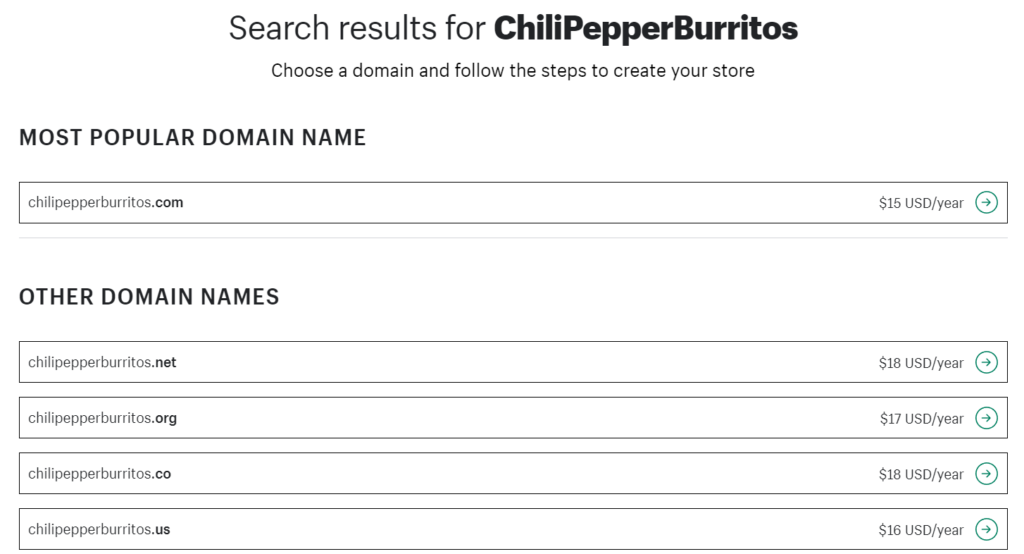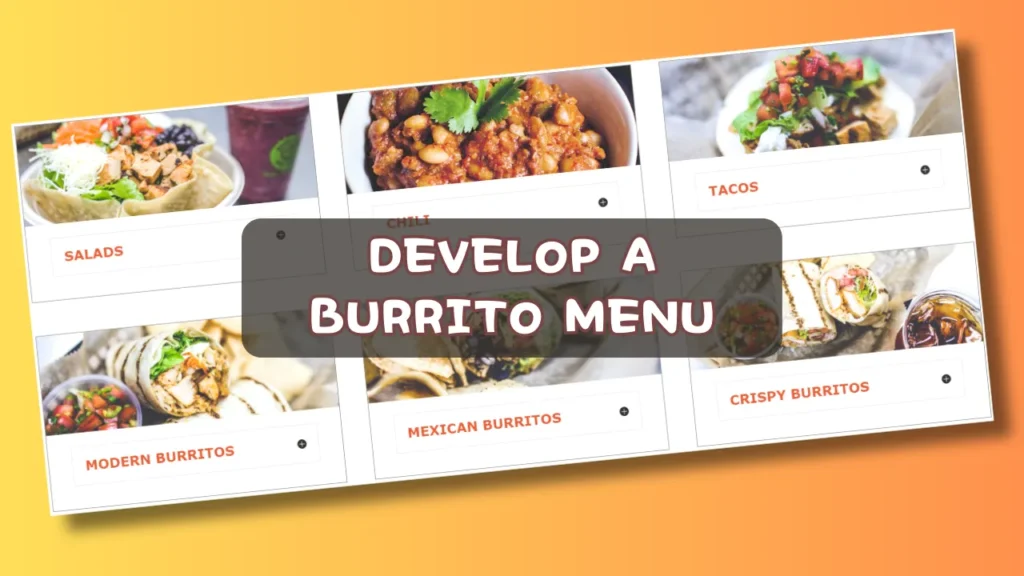Have you ever wondered how to start a burrito business? Want to pursue your career in the food industry? The business idea is a great opportunity for everyone.
Starting a business comes with challenges, but proper planning, research, and adopting the right strategy can convert it into a profitable venture.
Burritos are a Mexican dish popular in many regions of the world. They are prepared with a flour tortilla wrapped around filling items (meat, beans, rice, cheese, and vegetables).
The business concept is simple: by setting up a restaurant or food truck, you can serve a great burrito recipe to customers, which is also a money-making opportunity.
In the content, we’ll show you how to get started; here are the short insights:
- Creating a business concept
- Developing a roadmap plan
- Preparing a burrito menu
- Setting up the restaurant
- Key steps of the overall process
Follow the guide to learn the basic or key steps to open a burrito restaurant.
How to start a Burrito Business? steps

1. Decide your business concept
Before you start, understand the concept of different business models and decide the suitable one that aligns with your goals, target market, location, resources, or budget.
Fast-Casual:
- The casual dining restaurant model is a simple shop idea, including opening a physical shop in high traffic or a potential area.
- Quick service, ideal location, customized burritos with fresh ingredients, and great pricing are the primary.
Food Truck:
- A Burrito food truck can be a profitable idea; without opening a physical setup, a food truck idea can provide the opportunity to sell your burritos everywhere.
- Low startup costs compared to a brick-and-mortar restaurant, and flexibility to move your shop to different locations, including (high foot traffic areas, events, when there is more customer reach, etc).
Delivery business:
- The concept of this model is solely on delivery and takeout, focusing on targeting online food orders, and is suitable for smaller kitchens and urban areas with high delivery demand.
- This model is the best option to set up a reliable food delivery infrastructure to deliver food directly to customers’ homes or offices.
Franchise:
Joining an established franchise like Mucho Burrito provides brand recognition, operational support, and faster scaling but requires franchise fees and royalties.
Before deciding on any concept, research and analyze the target market, consider unique selling propositions (ingredients, unique flavor), location (high foot traffic, rural area, urban area), cost structure (rent, food cost, labor, marketing), technology (online ordering, delivery platforms, online presence), and many more.
Every idea has advantages and disadvantages, and the establishment process is also different, so determine all factors when deciding.
2. Identify your target market
Once you have a better idea of what’s hot and what’s not, you can develop a business plan according to the target market.
So, before creating a business plan, researching and analyzing the market is a step to understanding the market and potential competition.
A good way to start market research is by doing a detailed SWOT analysis, including your strengths, weaknesses, opportunities, and threats.
Study the demographic factors, such as (age, gender, income, education, location, food preference, and lifestyle) which are essential for understanding the target customer and focusing on their needs.
Your target customers:
- Food enthusiasts
- Busy professionals
- College students
- Families
- Fitness enthusiasts
- Vegetarians and vegans
- On-the-go consumers
- Young adults
- Late-night eaters
- Event attendees
As a recent research report by technovio.com, the global burritos market is growing with a CAGR of 7.12% (2023-2028) and is estimated to reach USD 17,289.6 million by the end of 2028.

3. Figure business operational cost
Starting the burrito shop requires investment in buying ingredients, equipment, commercial kitchen supplies, rent costs, utility, staffing, and salary expenses.
When you plan for your business, you must prepare a list of all expenses, including licensing, permits, branding, website, online presence, and marketing expenses.
Calculating the startup cost for your burrito business can be challenging due to the various factors that determine the expenses.
Initial expenses:
- License, food service permits, etc.
- Equipment and supplies for kitchen setup.
- Decoration, such as signage and interior design.
- Buying initial inventory and stocks for service.
- Business formation, contracts, and tax filing fees.
- Initial premiums for insurance policy expenses.
- Launch campaign costs, website development, etc.
- Staff training on food safety, operations, etc.
Ongoing expenses:
- Burrito making Ingredients, packaging, spices, beverages, etc.
- Lease payments, electricity, water, gas, waste disposal.
- Online ads, social media marketing, promotions, etc.
- Maintaining kitchen equipment, utensils, etc.
- Liability, property, workers’ compensation.
- A point-of-sale system, online ordering platform, and delivery app fees.
Other expenses:
- Franchise fees and royalties. (if you start a franchise)
- If using delivery platforms, you must pay fees (for online service) and delivery costs for vehicles, gas, and a delivery boy’s salary.
Here is only the basic overview of initial and ongoing expenses; the startup cost can vary on location, operation size, and budget; however, it requires a few thousand dollars to start.
Once you have calculated the required expenses for opening a burrito restaurant, find ways and sources to fund your business. Here are some options you can choose from:
- Personal funds
- Small business loan
- Ask friends and family.
- Crowdfunding
- Government program
- SBA loan, etc.
4. Develop a burrito business plan
Another important thing to consider when opening a burrito shop is creating a business plan, including the necessary details such as your goal, target market, competition, strategy, business overview, resources, financial plan, marketing, etc.
Outline all the required details of your burrito business and define clear objectives and strategies to provide a roadmap for success in the competitive food sector.
What should be included in a plan?
- Executive summary
- Business description
- Target market data
- Sample of menu
- Startup costs
- Operational costs
- Restaurant setup
- Location selection
- Marketing strategy
- Financial needs
Resources you can follow:
- Small Business Administration (SBA), overall business guide.
- Bplans – provides templates, sample plans, and expert advice.
6. Start with a brand name
Create a brand name; research a unique, attractive, web-friendly, easy-to-remember, and burrito business-related name for creating an identity.
A business name reflects the specific brand, product type, and service relevancy, so a business name is necessary to stand out in the competitive market.
When you choose a name, consider location, specific niche, and its types.
For example, if your burrito shop is specifically for selling chicken burritos, you can take names like “Chicken Burrito Bliss” or maybe another choice, “Chili Pepper Burritos.”

Once you have chosen a name, the next step will be to register a domain.
Why a domain is important?
- Secure your online identity.
- Professional presence
- Marketing benefits
- SEO advantages
Also, there are many benefits. Domain registration is a small investment to secure your brand online, which lays the foundation for a successful business.
7. Develop a unique menu

Differentiate yourself from the market competition by providing unique menu options, reliable pricing, and a great recipe.
Focus on creating a menu that should fulfil diverse customer preferences.
Start by selecting a range of delicious fillings for vegetarians and meat lovers. Don’t forget to include sides, drinks, and dessert choices.
Focus on various customer preferences, offer classic burritos, adventurous options, vegetarian/vegan choices, and breakfast burritos.
Fresh, high-quality ingredients and customizable options are key.
Burrito menu options:
- Signature burritos (familiar favourites with a twist)
- Veggie fiesta: roasted sweet potato, black beans, quinoa, roasted poblano peppers, avocado, chipotle crema.
- Baja fish: beer-battered white fish, cabbage slaw, avocado crema, mango salsa.
- Breakfast burrito: scrambled eggs, chorizo, cheese, pico de gallo, breakfast potatoes.
- Build your burrito: choose protein, beans, rice, salsa, toppings, and cheese.
- Create specialty burritos with unique flavor combinations).
The menu depends mainly on ingredients – chicken, beef, vegetarian, shrimp, vegan, etc.
8. Pick a suitable location
When starting a burrito business, choosing the right location is crucial.
You need to select a location that is easily accessible and visible to potential customers; also, where more people are crowded, there is high foot traffic and demand for Mexican food.
Ensure that the area you choose has sufficient parking, and research whether there are any regulations on food trucks in that location.
Ideal spot for opening a burrito shop:
- Business districts or office parks
- College campuses or student areas
- Tourist spots or popular destinations
- Sporting events or concerts
- Farmers’ markets or other outdoor markets
- Industrial parks or factories,
- Residential areas or neighborhoods
9. Secure equipment and supplies
Obtain the necessary equipment, supplies, and kitchen essentials for making burritos; commercial-grade supplies are required to open a burrito restaurant.
Find the best supplier and buy the essential equipment to operate your business.
You need key items such as a commercial-grade grill or griddle for cooking tortillas and meats, a refrigeration system for storing ingredients, efficient food preparation tools such as knives and cutting boards, and serving equipment like warmers and display cases.
Equipments:
- Commercial griddle
- Rice cooker
- Food processor
- Blender
- Tortilla press (if making tortillas)
- Tortilla warmer
- Refrigerators and freezers
- Work tables and prep stations
- Utensils (knives, spatulas, spoons, tongs)
Commercial griddle
Food processor
Utensils
Supplies:
- You need aluminum foil, wax paper, parchment paper, plastic wrap, cleaning supplies, disposable gloves, hair nets, food labels, etc.
Also, remember to buy additional supplies like disposable utensils, takeout containers, and cleaning supplies to maintain hygiene standards.
Before purchasing anything, research specific requirements (depending on the recipe, business size, budget, shop type, etc.), prepare a list, find the best supplier, and then buy.
10. Business legal requirements
Before launching your business, you must meet the necessary legalities, registration, licensing, permits, taxation, and other considerations.
Register your business if you want to separate your business and personal assets.
You need to register as per the requirements of the state, local, and federal levels.
When you consider registering your burrito business, you need to choose a suitable business structure that should meet your needs and fulfill the goals of your plan.
Choose a business structure:
Sole proprietorship, partnership, LLC, or corporation have different tax, liability, and paperwork implications. Consult an accountant or lawyer to decide what’s best for you.
Register with your state and obtain the necessary licenses and permits depending on your chosen structure.
Apply for license and permits:
Getting a license depends on location, business size, city, country, and other factors, so make sure you first get the proper idea about it.
- General business license
- Employer Identification Number (EIN)
- Foodservice license
- Food handler’s permit
- Certificate of occupancy
- Building health permit
- Sales tax license
- Zoning approvals
Research for specific permits and licenses required depending on your local requirements because operating a food-based business may require specific permission or certificates.
Open a business bank account to track and manage your outgoing expenses and profit properly; it is a smart tip for separating personal or business finances.
Obtain business insurance:
Business insurance provides financial protection against various types of losses, such as loss of equipment breakdown, natural disasters, or other unforeseen events.
- General Liability
- Property Insurance
- Workers’ Compensation
Consult an insurance agent to determine what type of insurance is best for your burrito business, and they will also help you get insurance.
11. Develop a Marketing Strategy

Marketing and promotion are the primary of business success and growth; create an effective strategy to advertise your burrito restaurant.
A successful marketing and advertising strategy will attract customers to visit your shop and can build a brand within the industry.
Several marketing ideas you can follow, focusing on your target market, choose the best strategies. Currently, online – social media marketing, SEO, paid advertising, social media campaigns, online shop listing, and email marketing are popular.
Here are some common advertising ideas:
Social media promotion:
- Create social media profiles on different platforms, including (Facebook, Instagram, TikTok, Twitter, Linkedin, Pinterest, and Reddit, and create a YouTube channel).
- Active on every social media platform, share videos, photos, content, and information about your burrito shop, and engage the audience; try to create a strong online presence to increase your popularity.
Create a website:
- In the digital era, having a user-friendly business website is a necessary part of online branding, designing your website focusing on your target customer, creating an about us page and a contact us page, add your menu, pricing, and location details.
- Requirements for building a website (a domain, hosting, themes, and SEO tools): WordPress is a great platform for creating a website with easy-to-understand features and functionality.
- Partnering with local food bloggers or influencers can help increase brand awareness and attract a wider audience to your shop.
List your service in local directories:
- Boost local visibility and SEO: list your service in relevant directories (Google My Business, industry-specific platforms, local Chamber).
- Fill profiles with accurate info, keywords, and calls to action. Update regularly, respond to reviews and track effectiveness.
Launch with a grand opening:
- Once everything is ready, plan a grand opening event to create a buzz in the local area.
Frequently Asked Questions
Is The Burrito Business Profitable?
Starting a burrito business can be profitable, but it depends on location, competition, food quality, ingredients, marketing, and management.
How much does it cost to fill a burrito?
A burrito depends on the ingredients used to fill it, but the average cost is between $2 to $10.
What makes burrito so good?
By using fresh, healthy ingredients such as meat, beans, rice, cheese, and salsa, their combination, and their texture, you can make them a satisfying and delicious meal.
What meat is best for a burrito?
The best meat for a burrito, there’s no single “best,” but carne asada or carnitas reign supreme for many, with al pastor a strong contender, depending on preference for flavor and texture.
Is burrito made of Maida?
Traditionally, no burritos use wheat tortillas, but “Maida” (all-purpose flour) can be a substitute.
Wrapping up
While the deliciousness of burritos may be undeniable, starting a successful business requires more than a tasty recipe.
Establishing a burrito business requires time, effort, proper planning, research, dedication, and hard work; success depends on market demand, competition, and other factors.
We’ve discussed the key steps for starting a burrito business; if you have other doubts regarding startups, ask your query in the comment.
You may also like:








